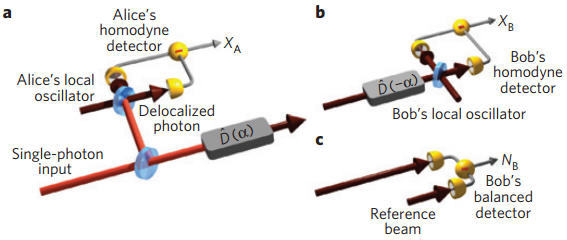Since 1935, when Austrian physicist Erwin Schrödinger created his famous thought experiment about a cat that was both alive and dead, physicists have tried to create large scale systems to test how the rules of quantum mechanics apply to everyday objects.
Researchers say they have made a significant step forward in this direction by creating a large system that is in two substantially different states at the same time
Understanding Schrödinger's cat
The world of the extremely small and extremely large doesn't always follow what we might consider common sense. Quantum physics allows for particles to be in two states at the same time – quantum superpositions. A radioactive nucleus, for example, can simultaneously be in a decayed and non-decayed state.
Applying these quantum rules to large objects leads to paradoxical and even bizarre consequences. To emphasize this, Schrödinger, one of the founding fathers of quantum physics, proposed a thought experiment in 1935: a cat that could be killed by a mechanism triggered by the decay of a single atomic nucleus. If the nucleus is in a superposition of decayed and non-decayed states, and if quantum physics applies to large objects, the belief is that the cat will be simultaneously dead and alive.
While quantum systems with properties akin to 'Schroedinger's cat' (English spelling) have been achieved at a micro level, the application of this principle to everyday macro objects has proved to be difficult to demonstrate.

a - The preparation of the micro–macro entangled state (2) and Alice’s measurement of the field quadratures in the microscopic portion of the state. b,c, The two options for Bob’s measurement of the macroscopic portion of the state: energy measurement to verify macroscopicity (b) and undisplacement followed by the quadrature measurement to verify entanglement (c). Beams of bright red colour correspond to microscopic optical states; dark red to macroscopic. Credit and link: DOI: 10.1038/NPHYS2682
"This is because large quantum objects are extremely fragile and tend to disintegrate when subjected to any interaction with the environment," explains University of Calgary Professor Alex Lvovsky, who wrote the paper with associate professor Christoph Simon and their graduate students.
Photons help to illuminate the paradox
The breakthrough they achieved is that they were able to contrive a quantum state of light that consists of a hundred million light quanta (photons) and can even be seen by the naked eye. In their state, the "dead" and "alive" components of the "cat" correspond to quantum states that differ by tens of thousands of photons.
"The laws of quantum mechanics which govern the microscopic world are very different from classical physics that rules over large objects such as live beings," said Lvovsky. "The challenge is to understand where to draw the line and explore whether such a line exists at all. Those are the questions our experiment sheds light on."
While the findings are promising, study co-author Simon admits that many questions remain unanswered."We are still very far from being able to do this with a real cat. But this result suggests there is ample opportunity for progress in that direction."
Meow?
Citation: A. I. Lvovsky, R. Ghobadi, A. Chandra, A. S. Prasad and C. Simon, 'Observation of micro–macro entanglement of light', Nature Physics July 21, 2013 DOI: 10.1038/NPHYS2682 (no online link yet)






Comments